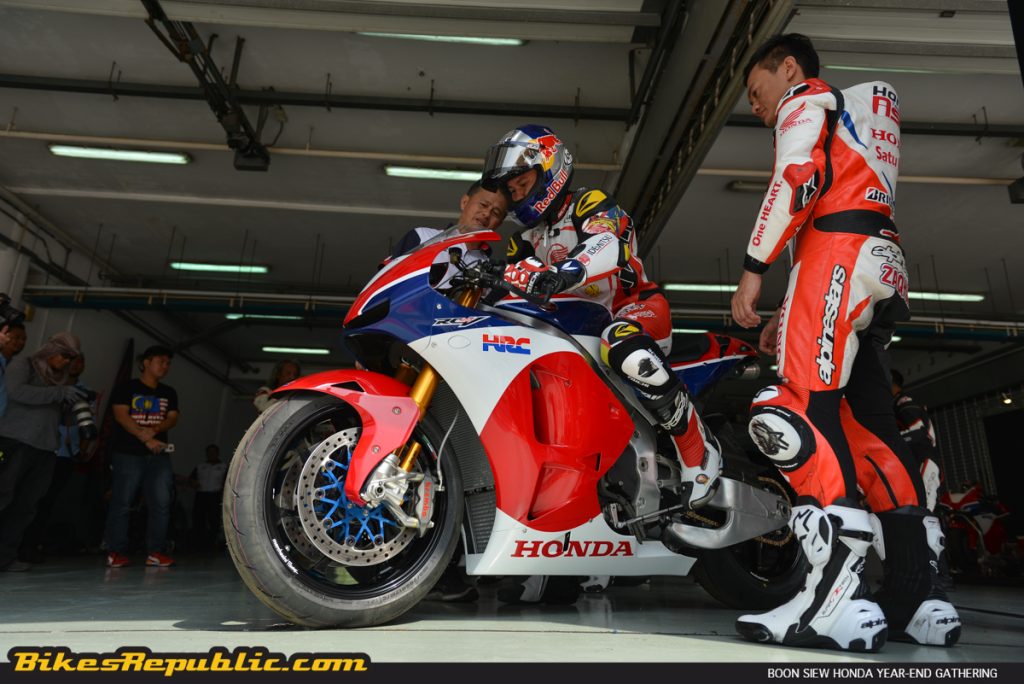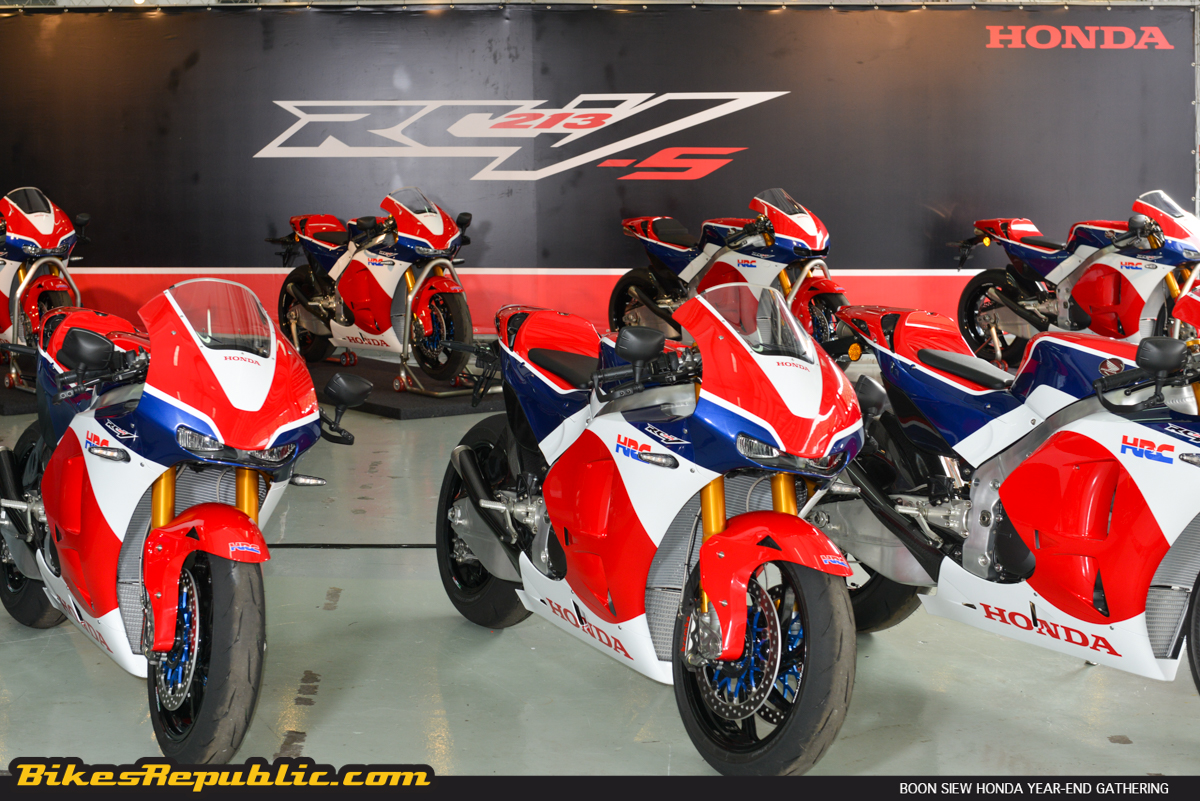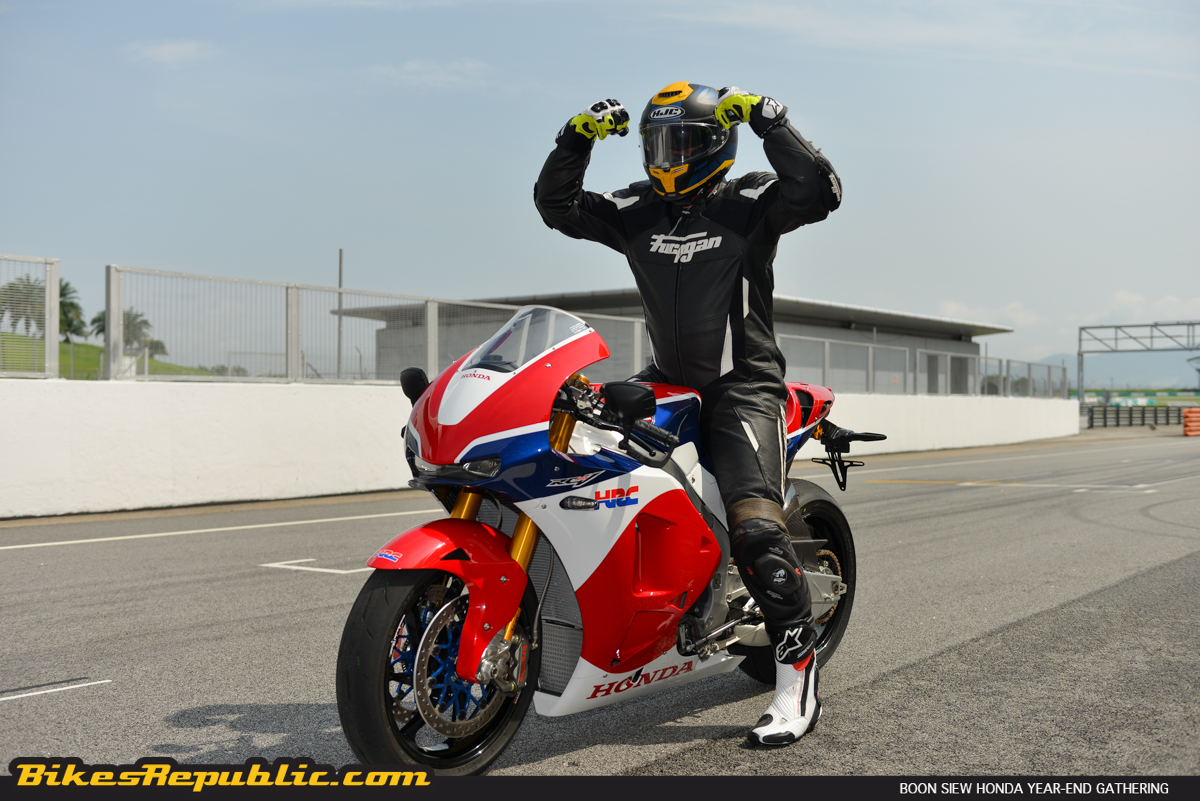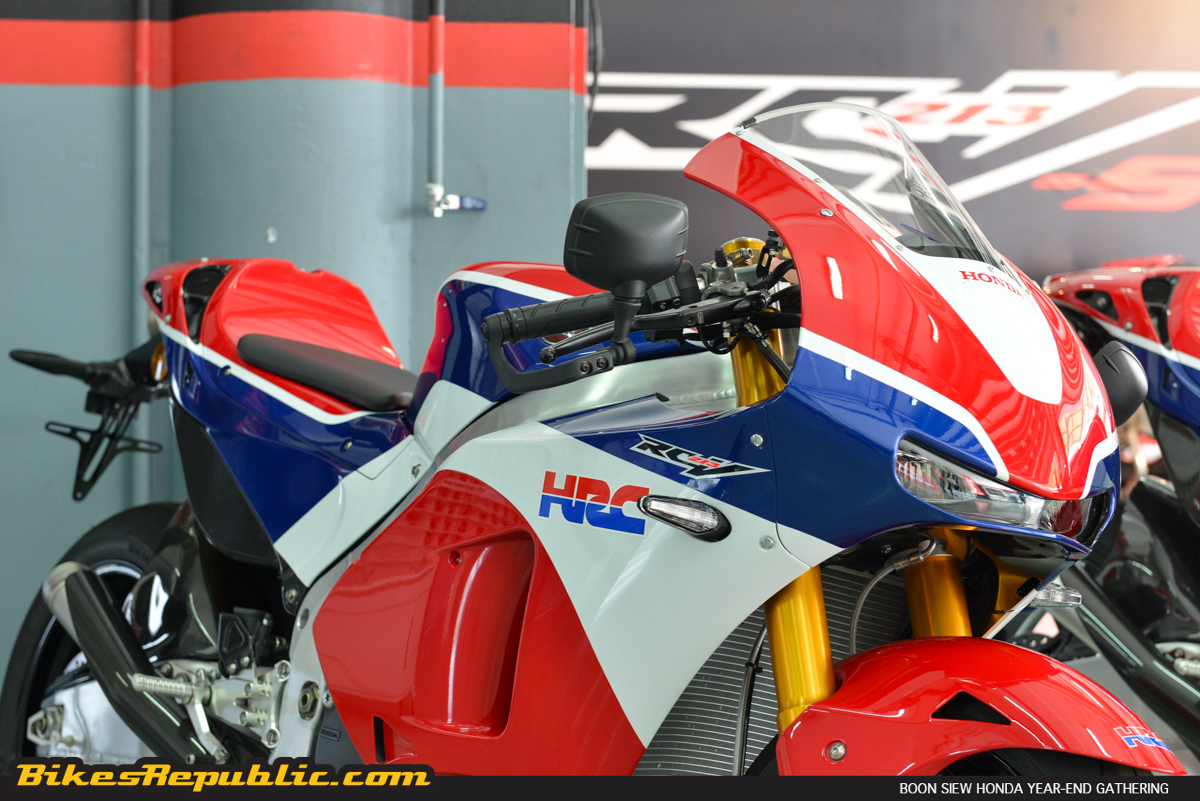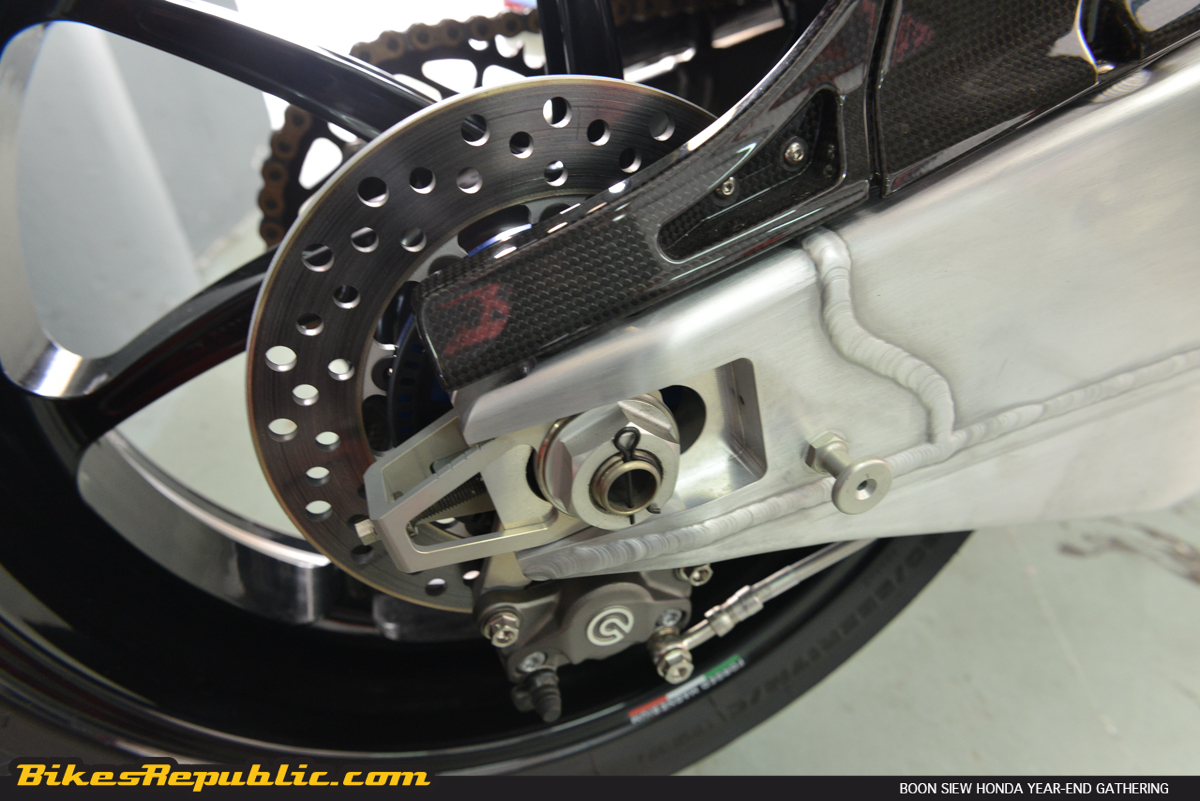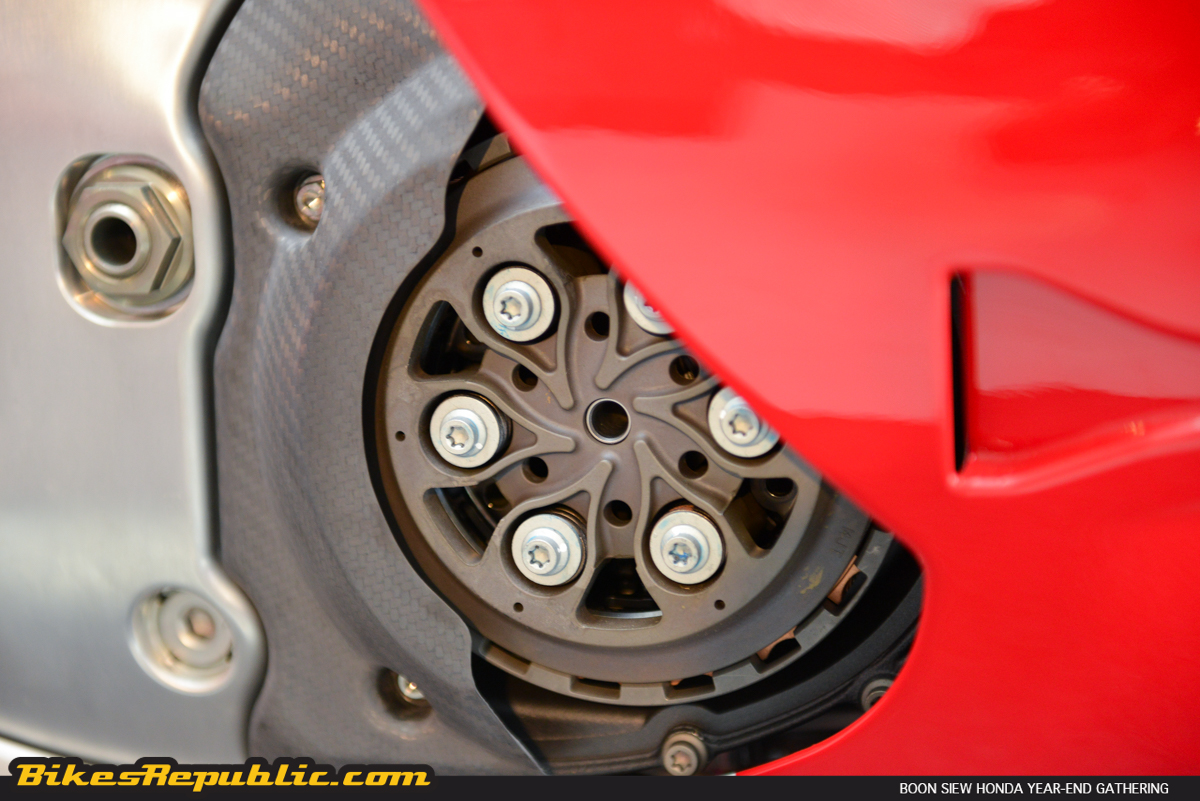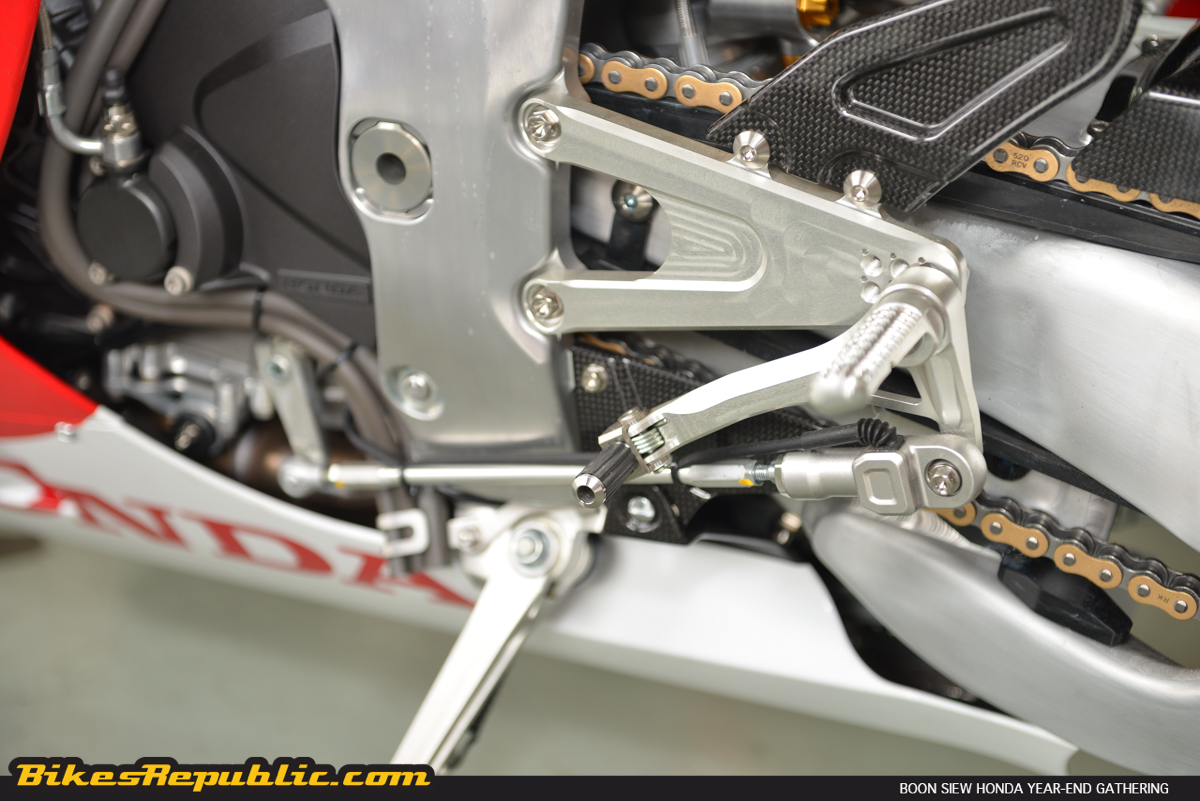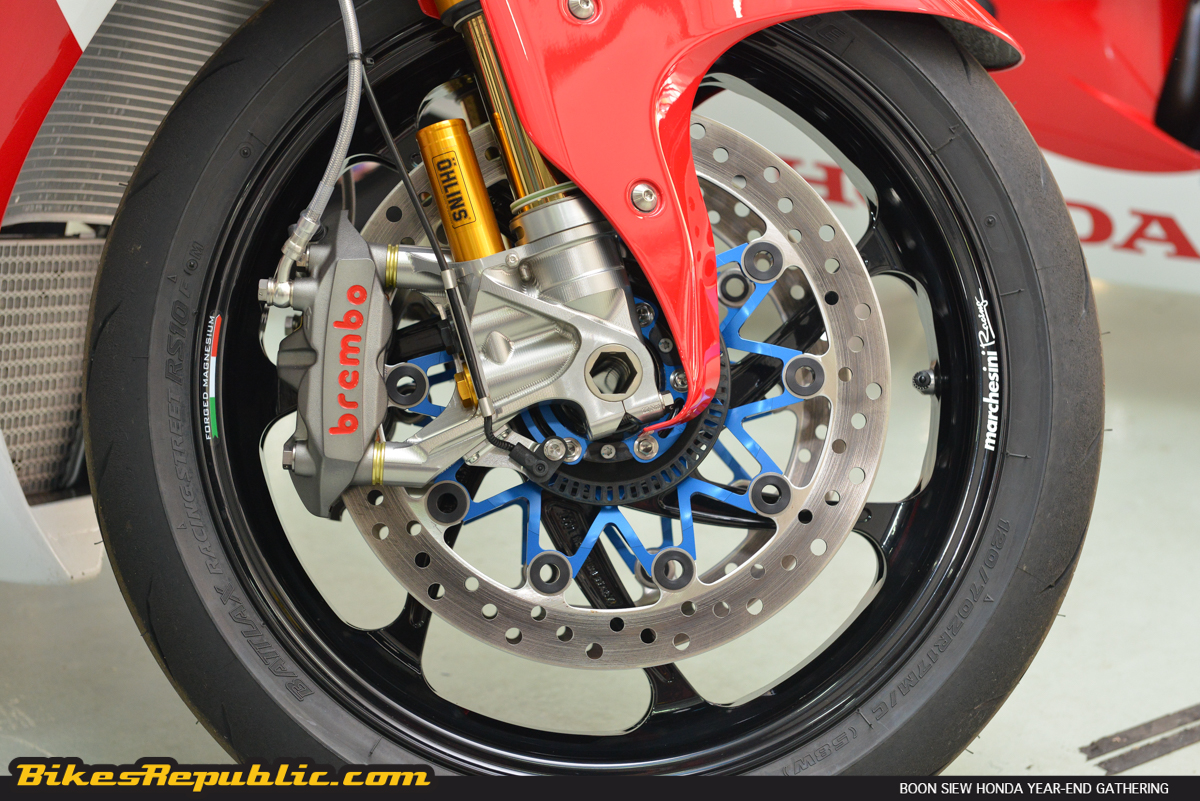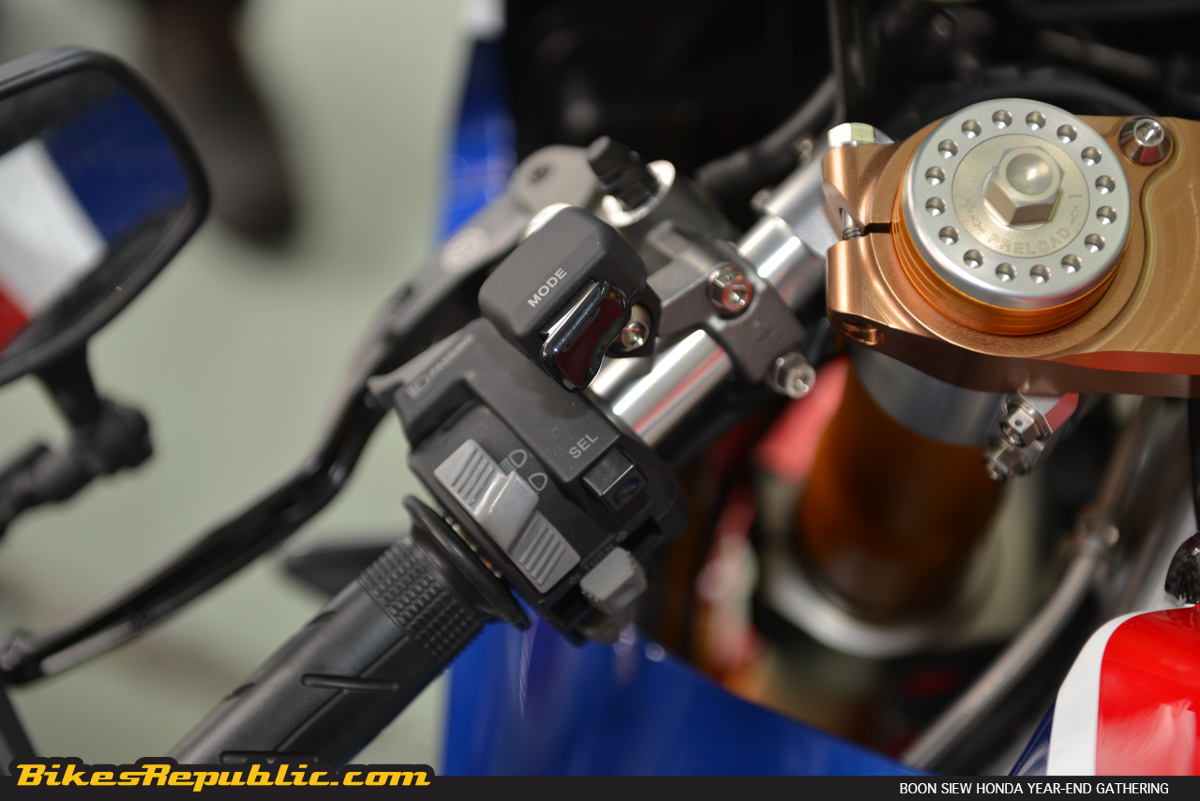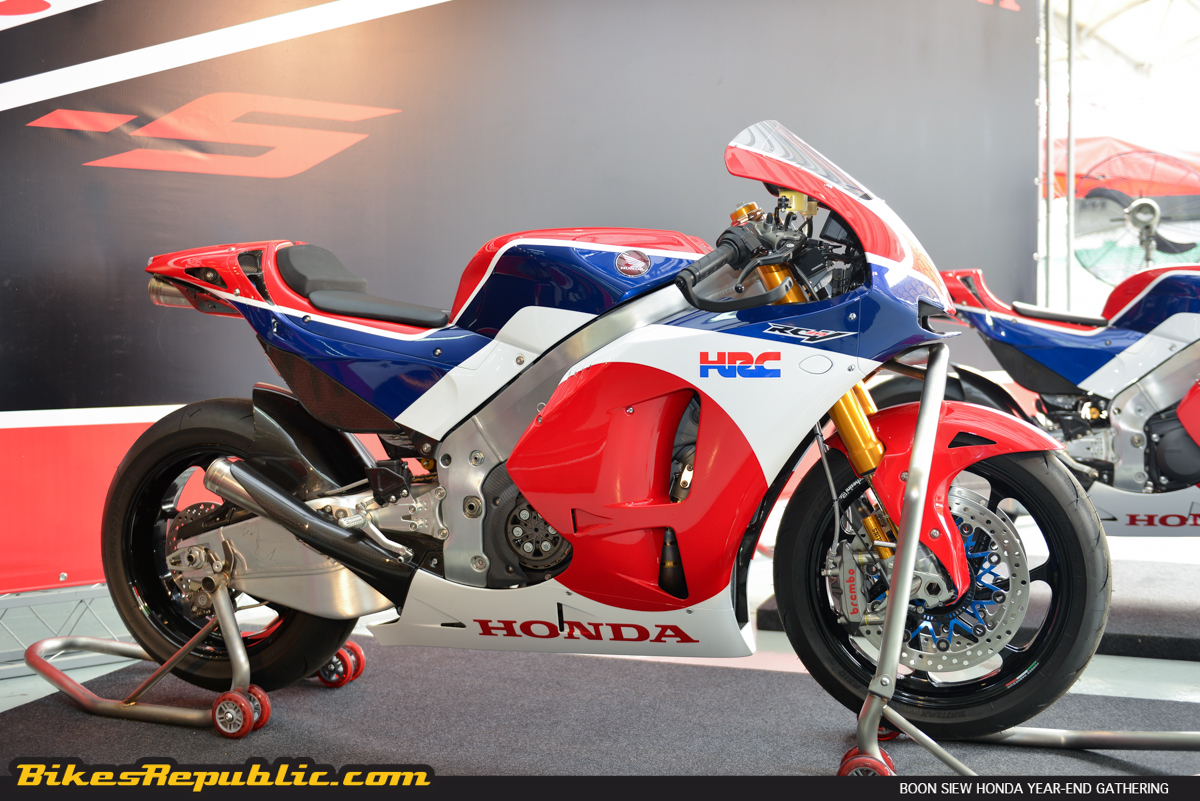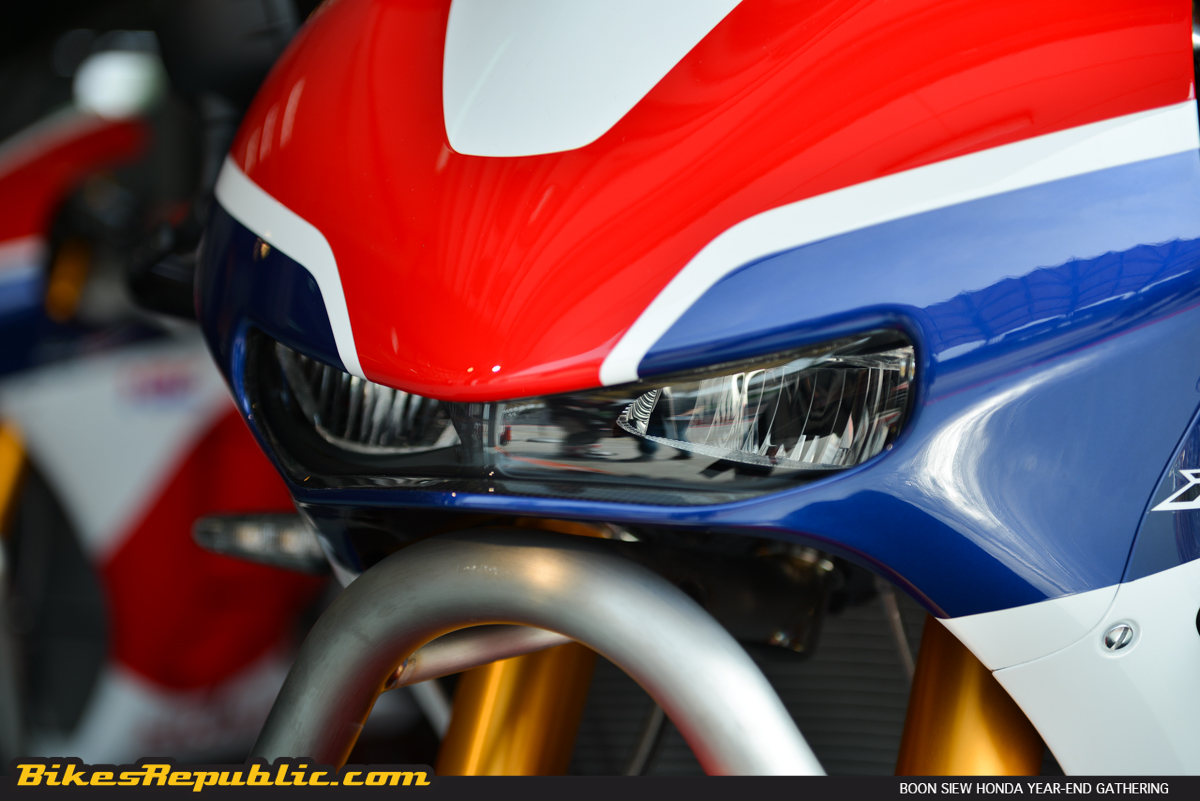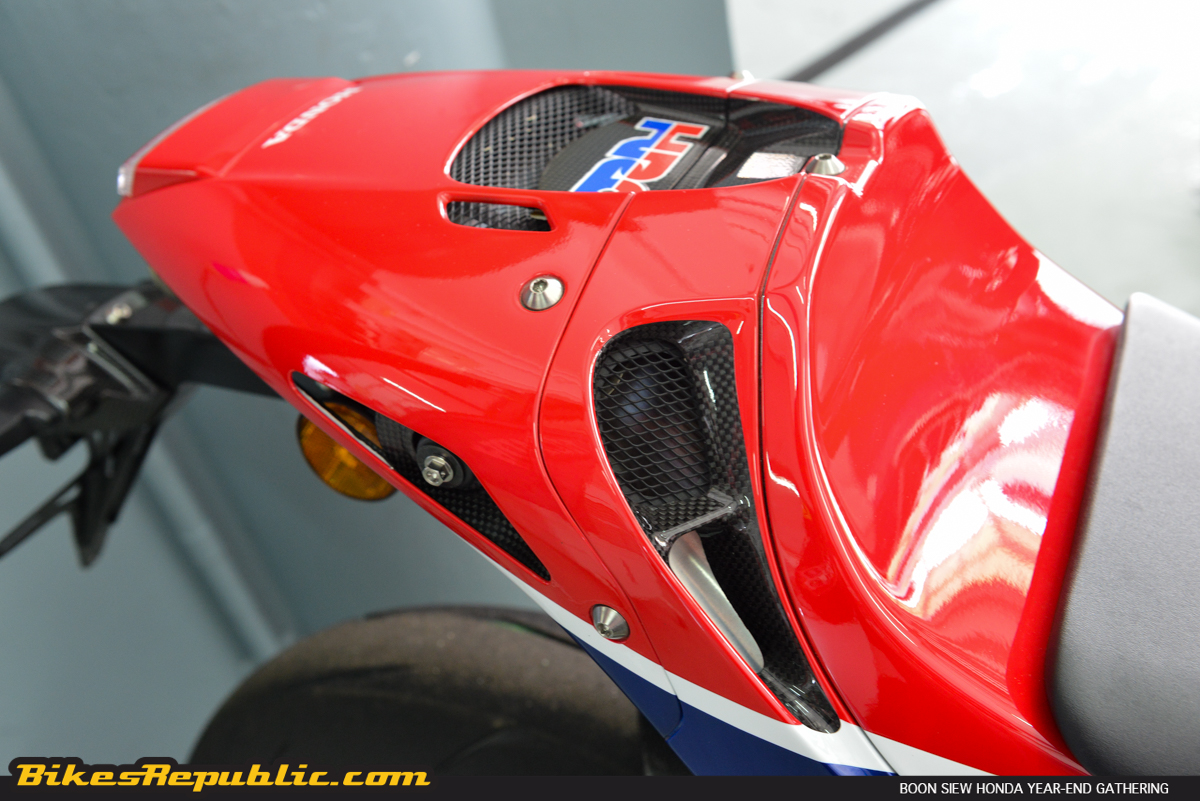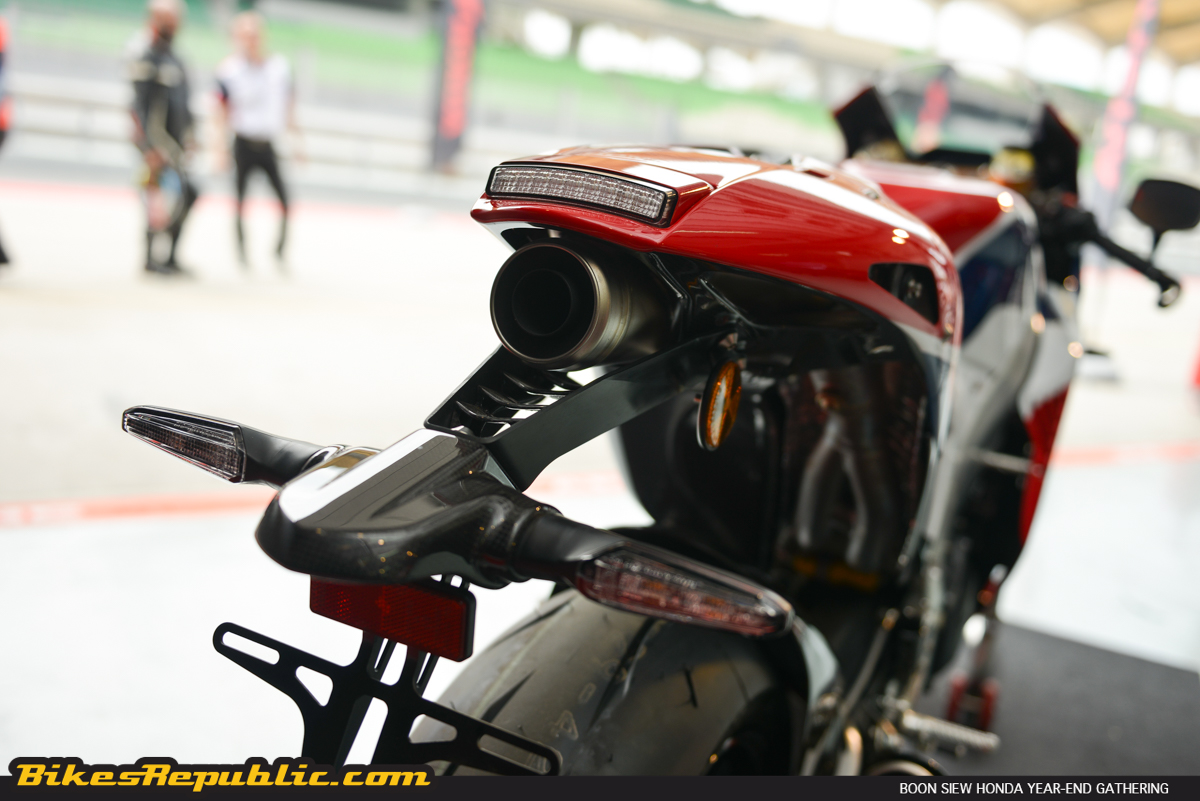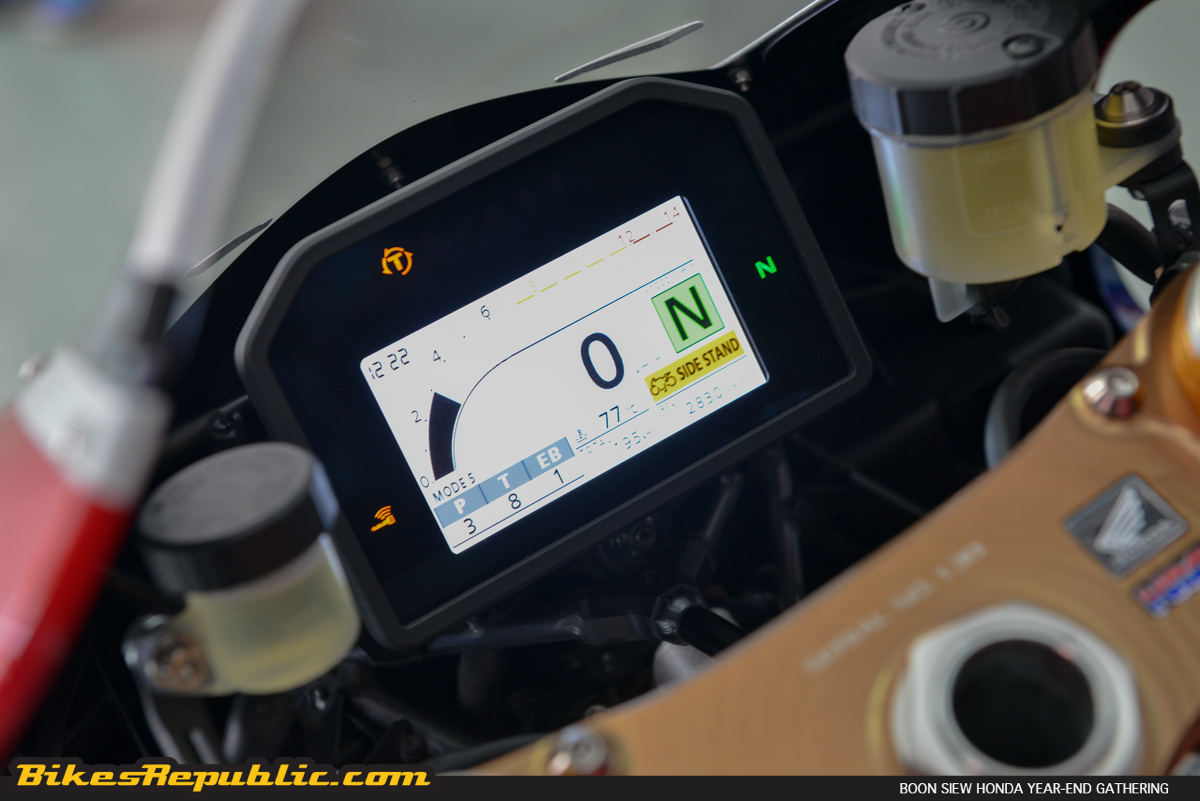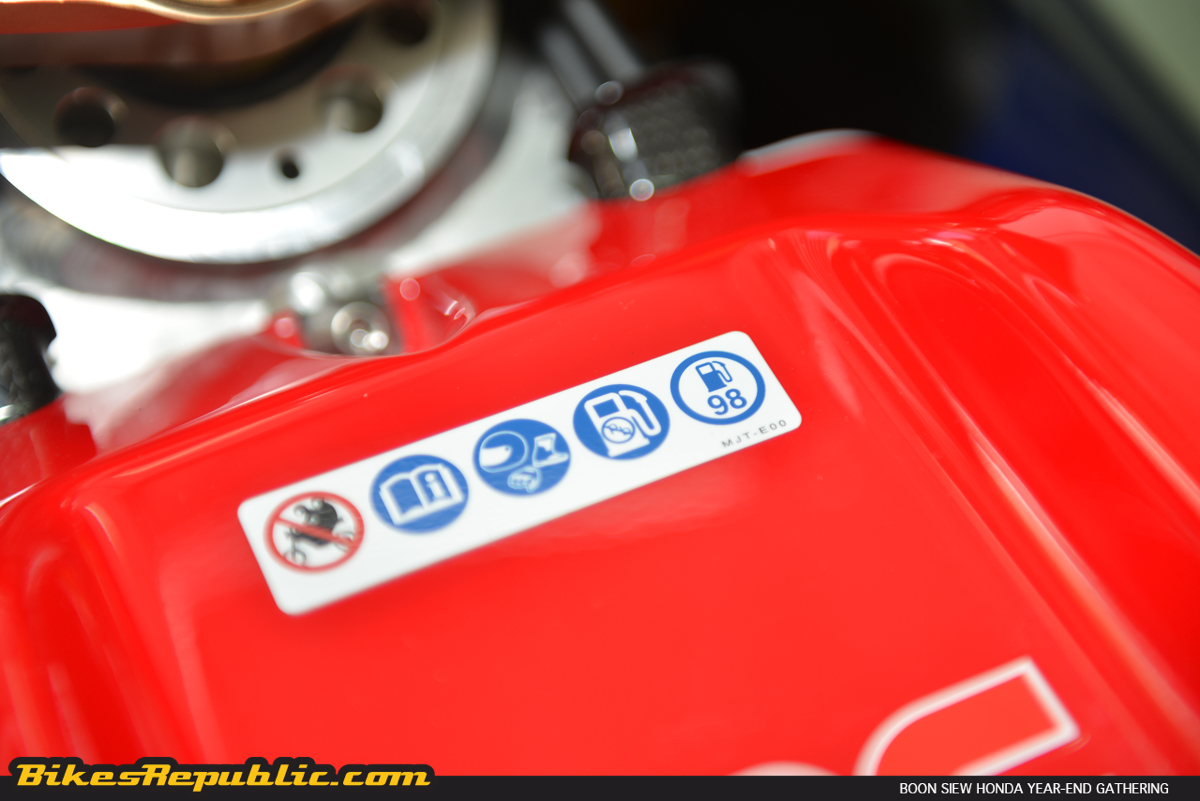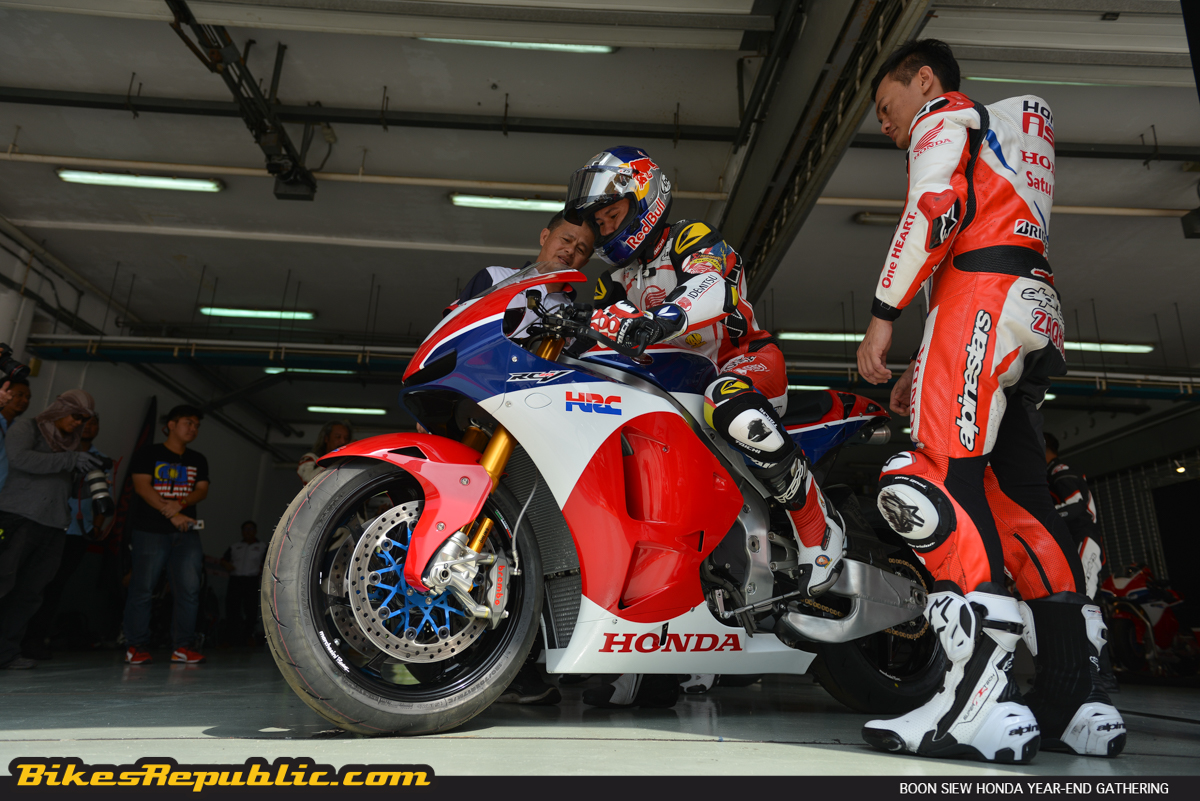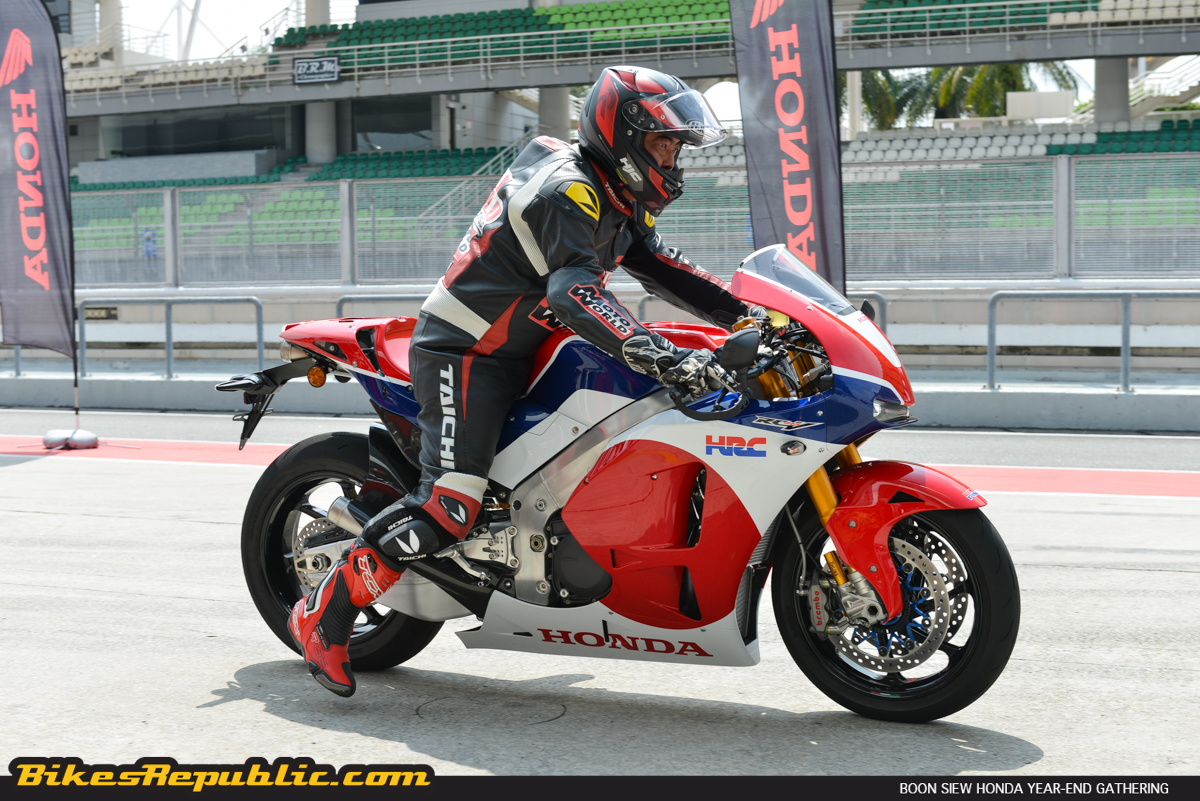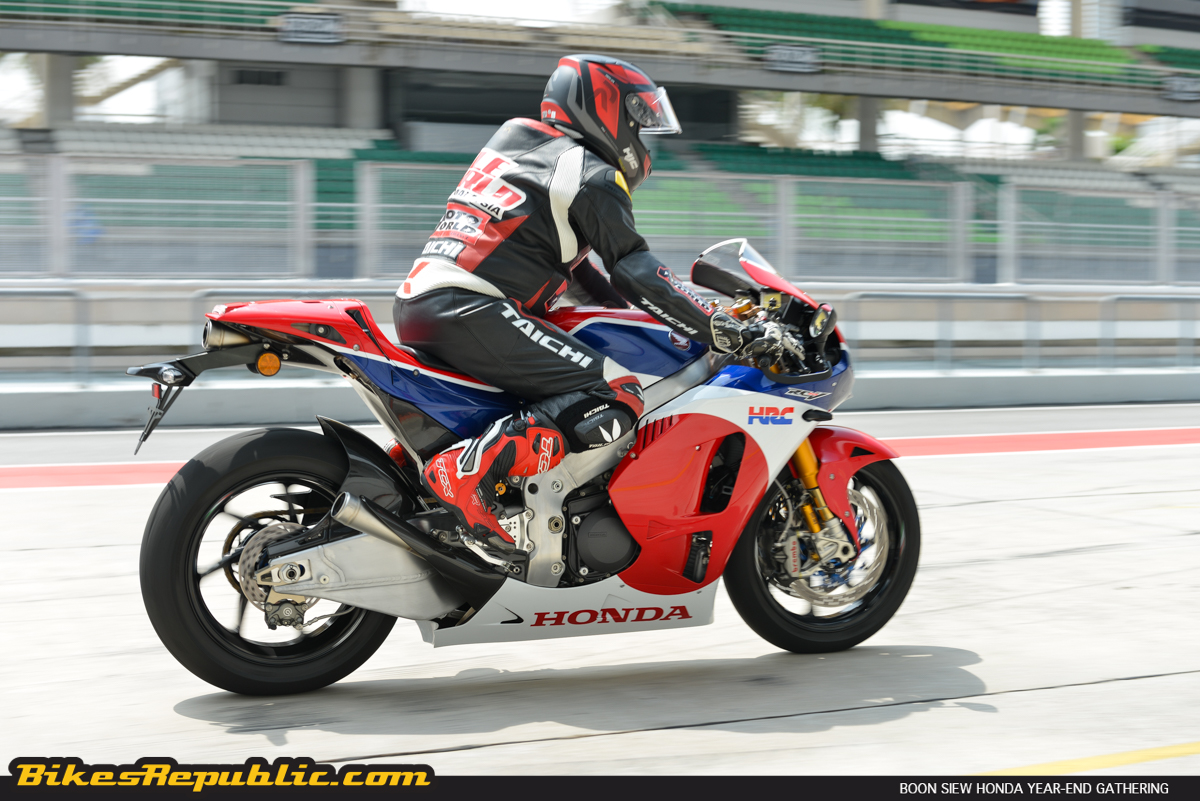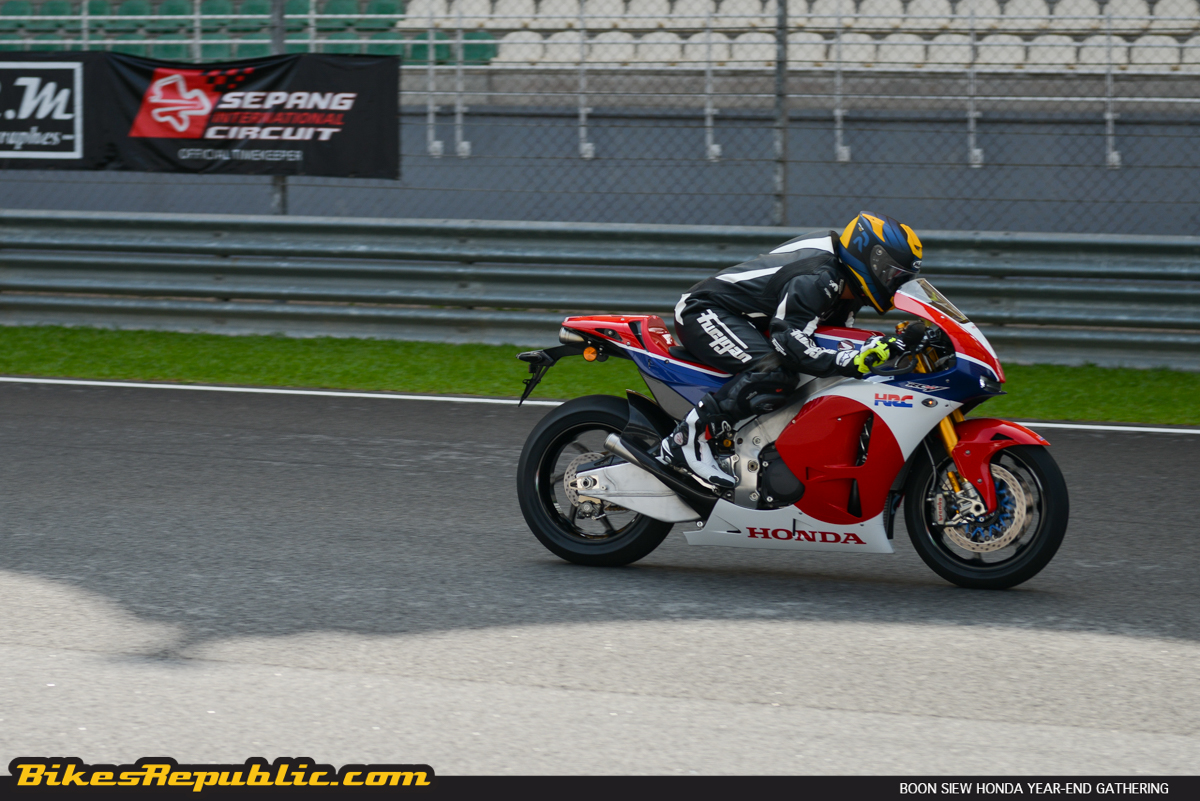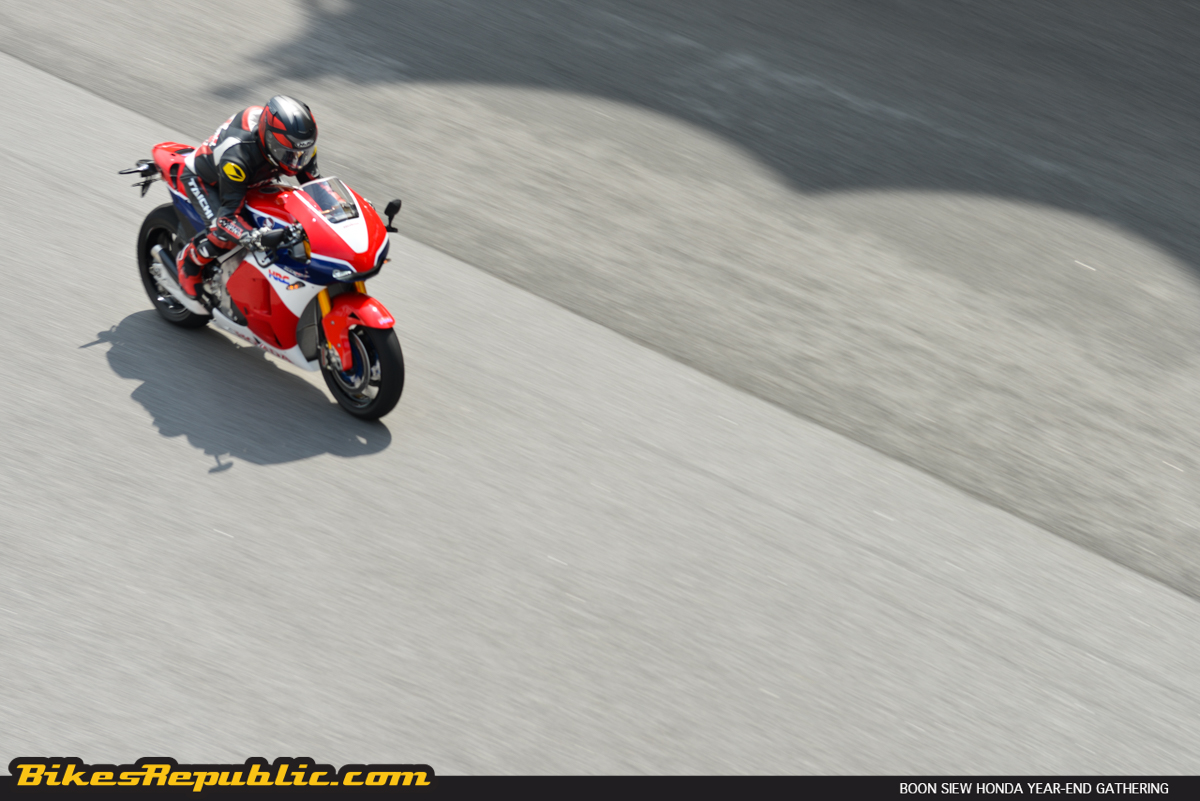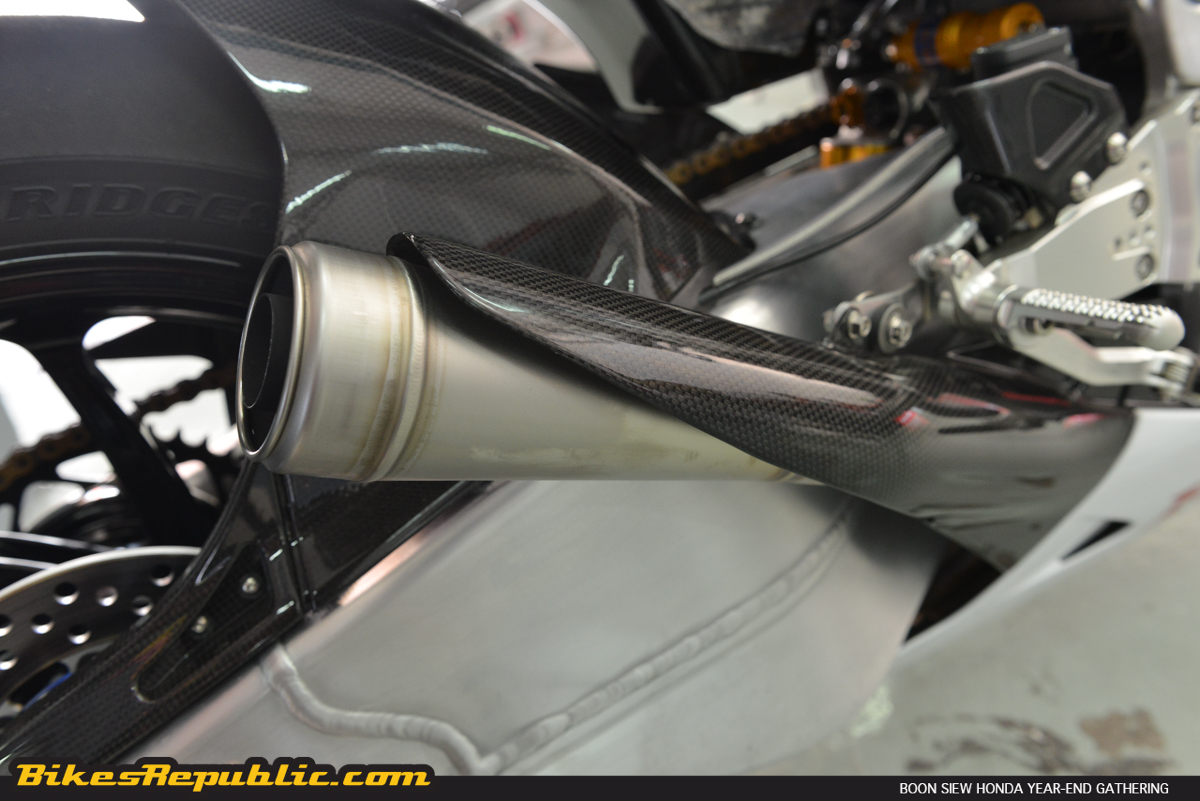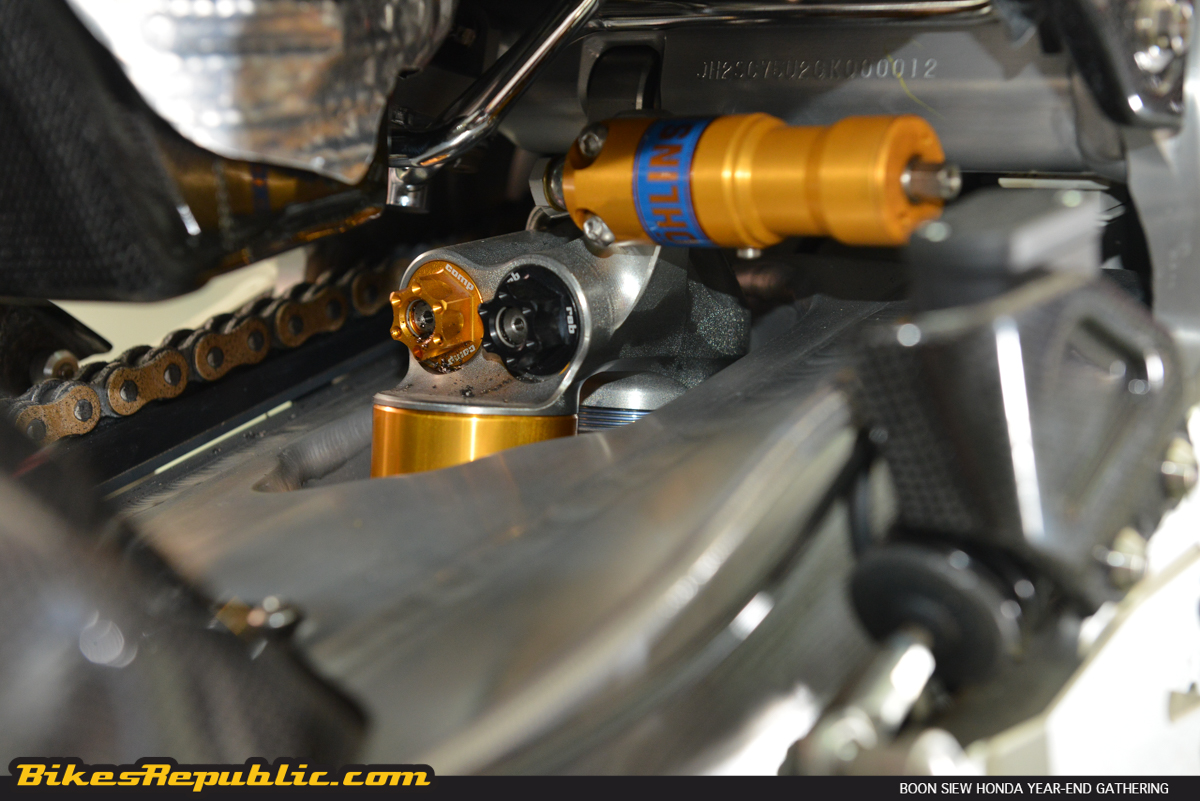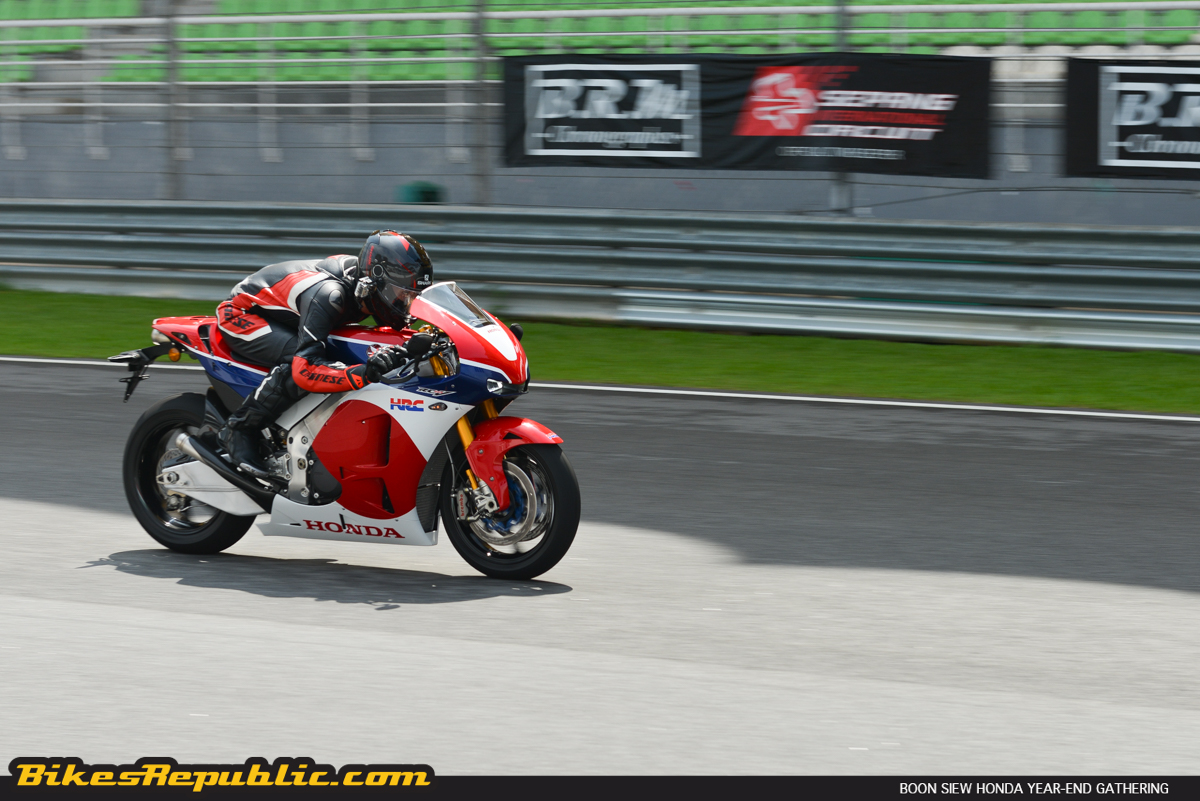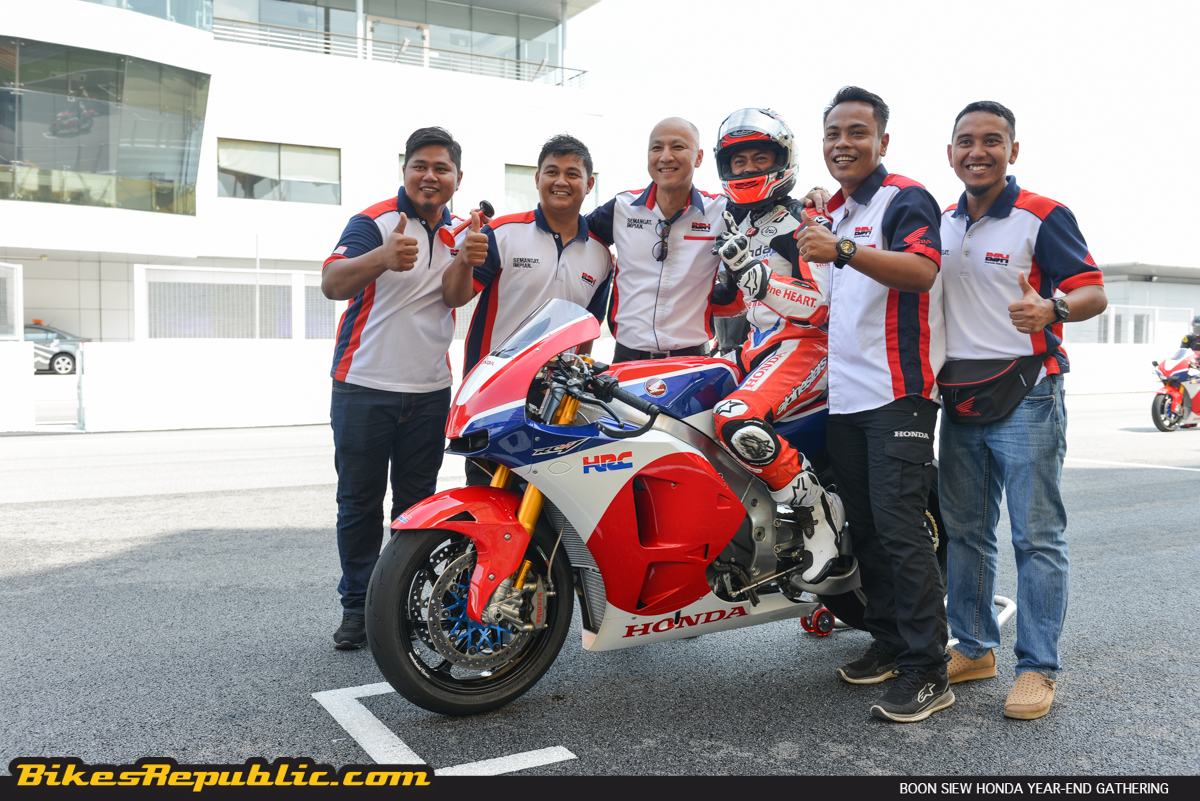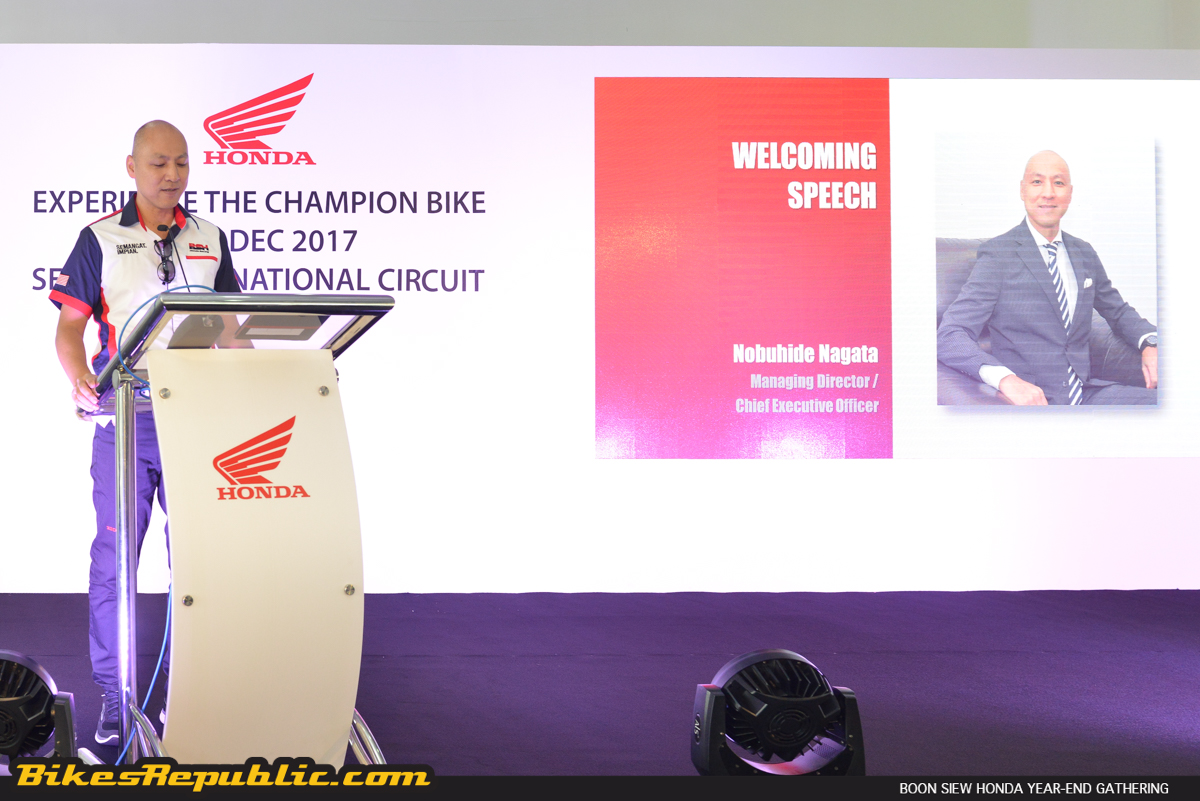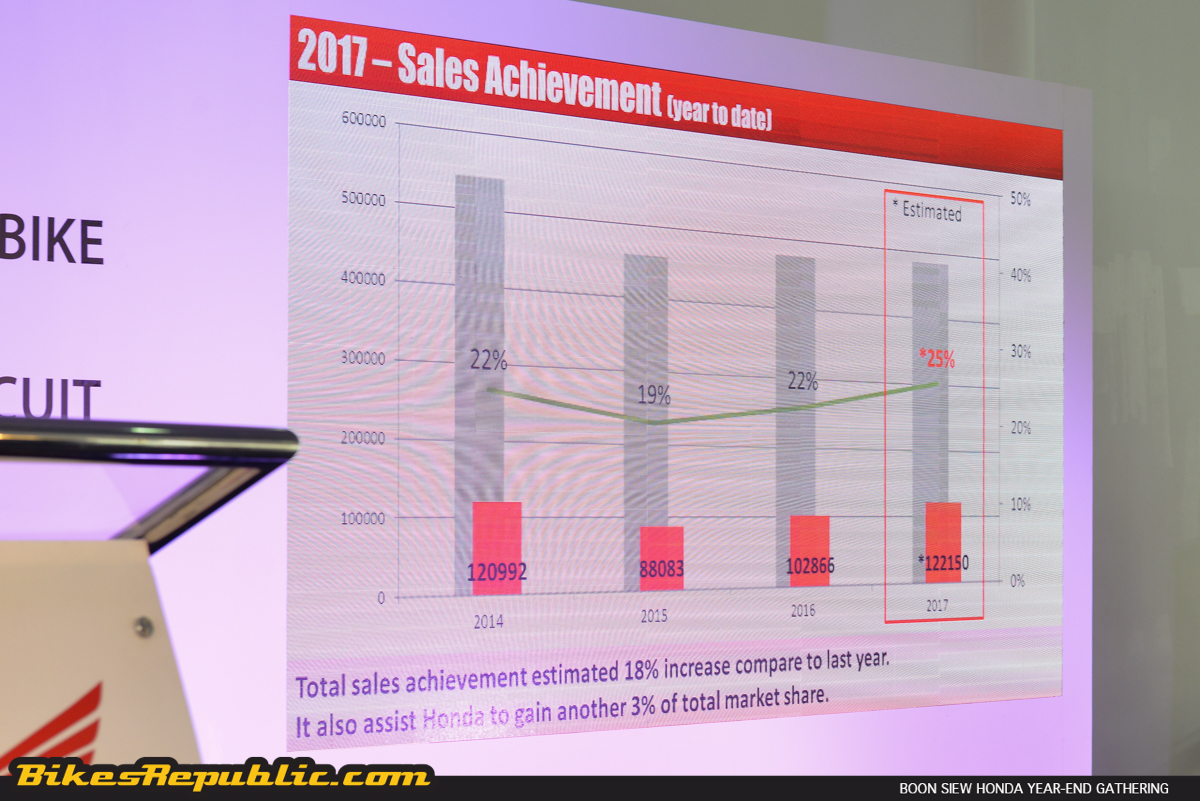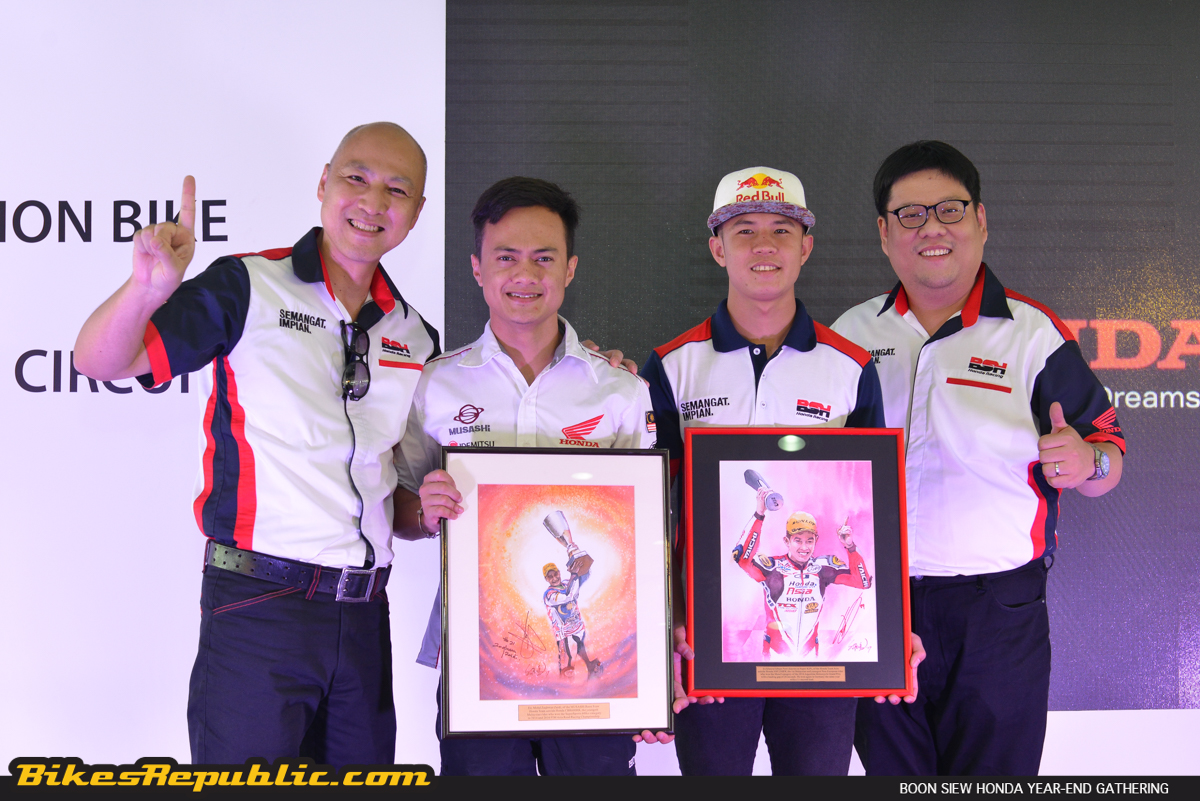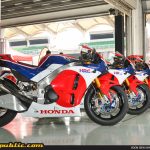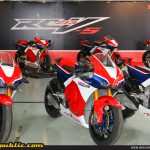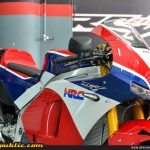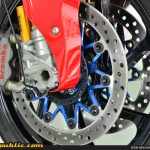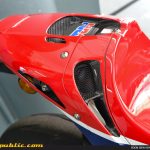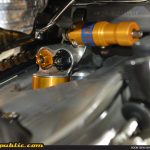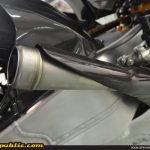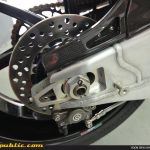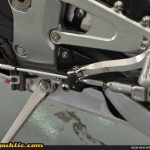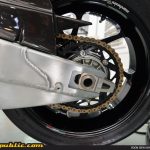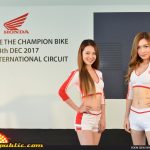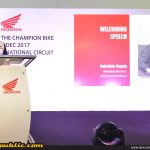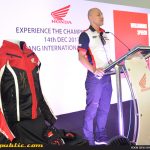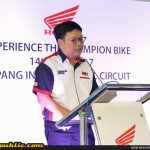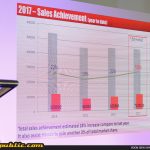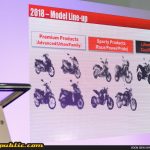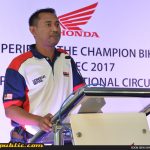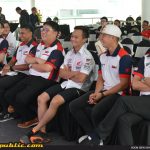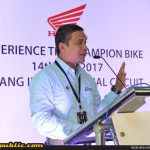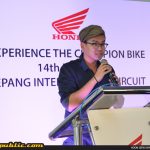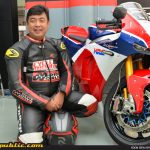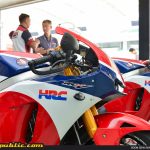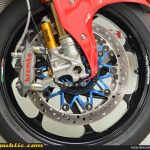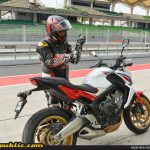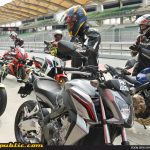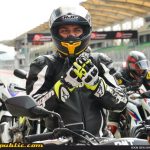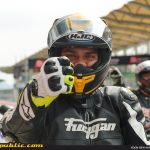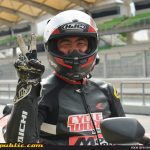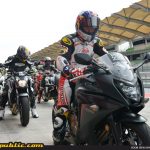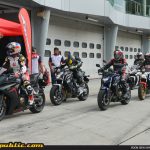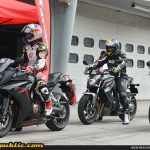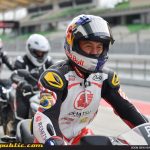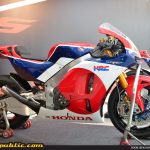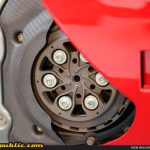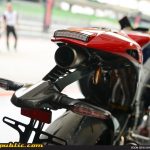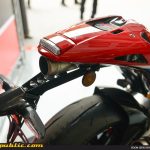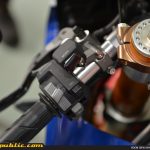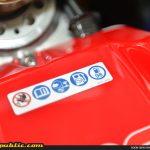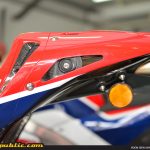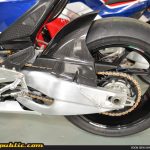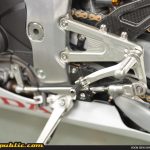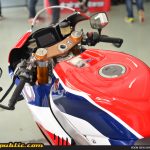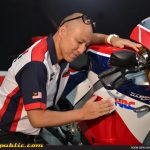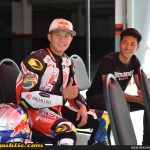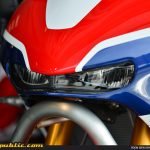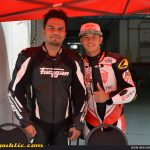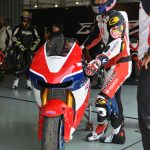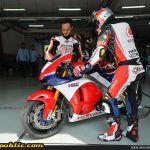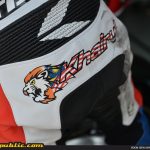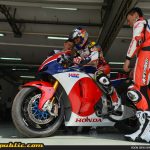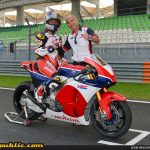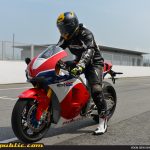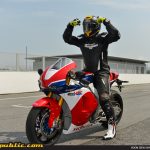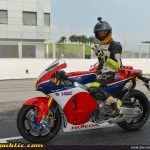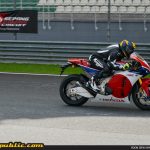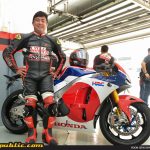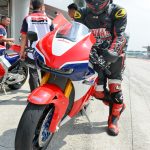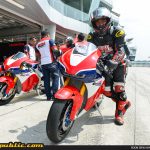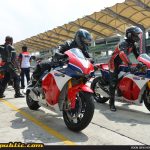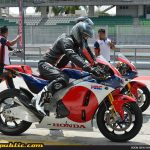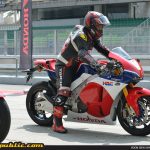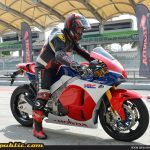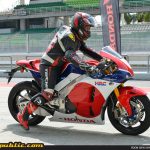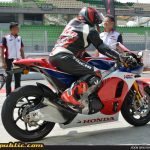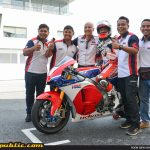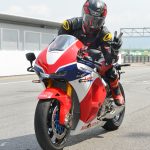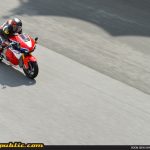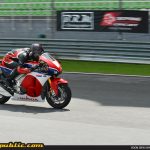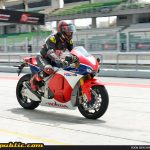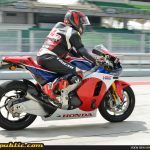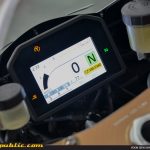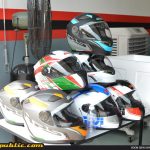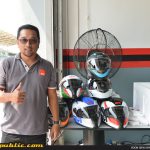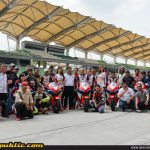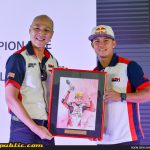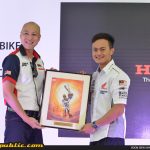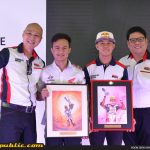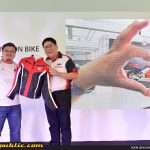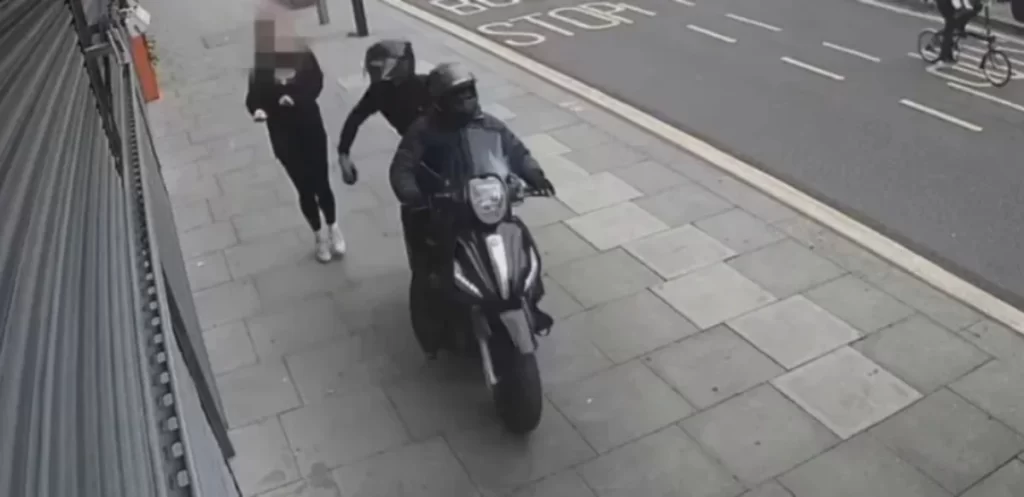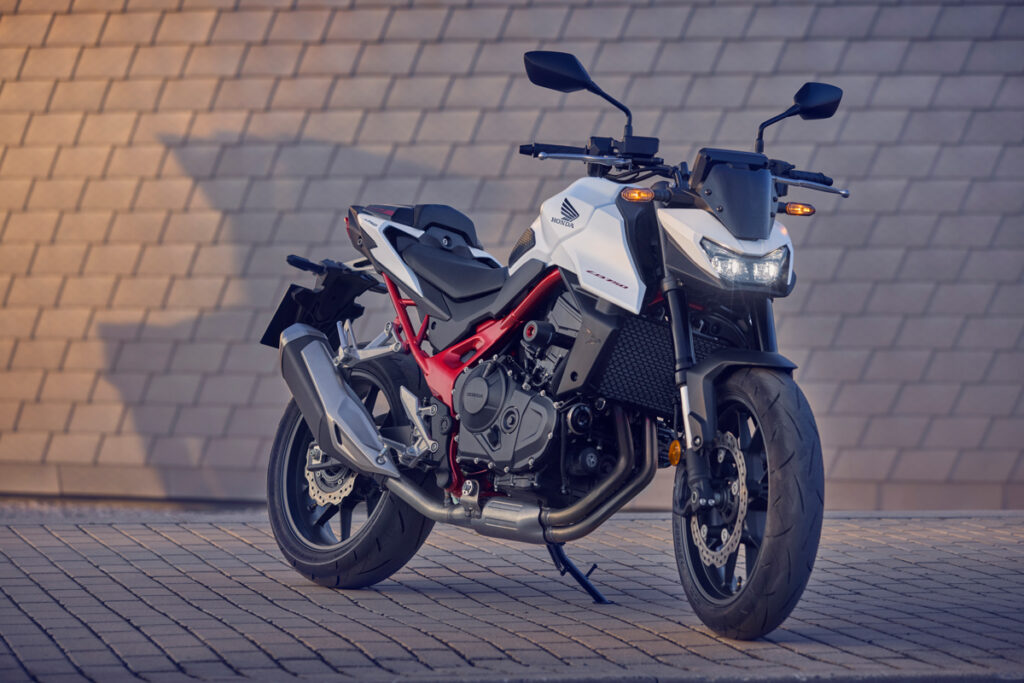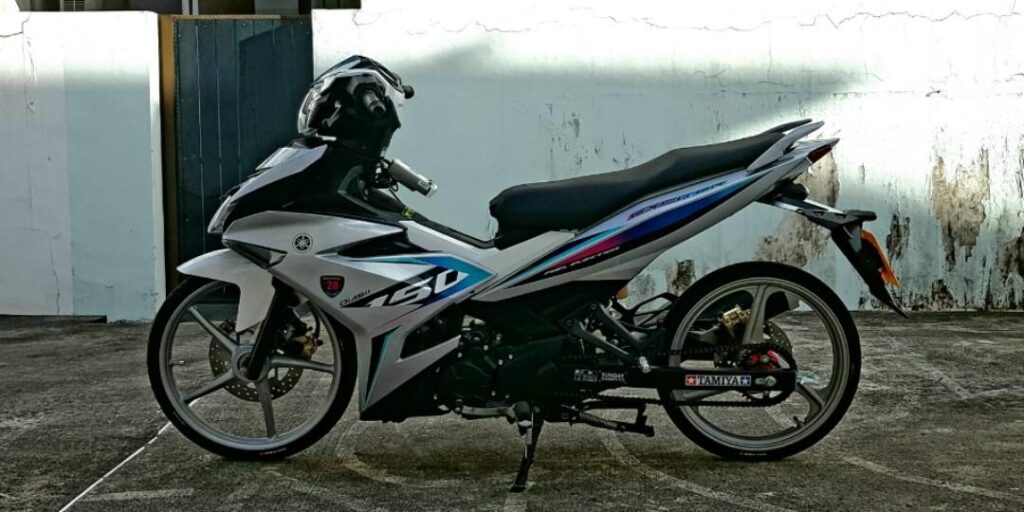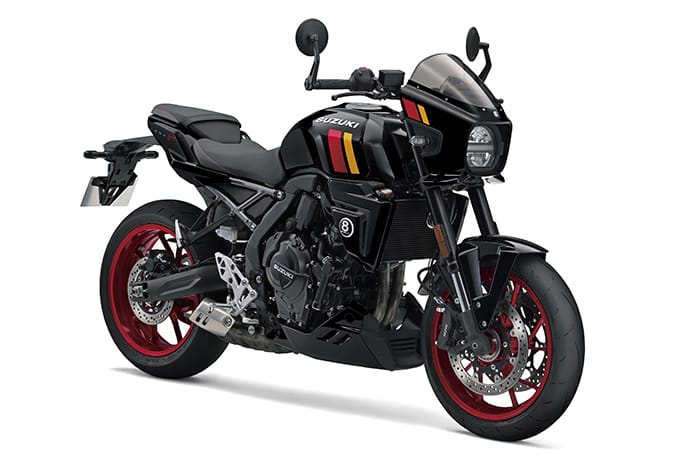-
We had the opportunity to ride the Honda RC213V-S MotoGP replica.
-
It was part of Boon Siew Honda’s Year-End Gathering for the media.
-
The RC213V-S was unlike no other motorcycle on the planet.
When it comes to motorcycle racing, I still romanticise what many regard as the “Golden Age of Motocycle GP.” Yes, those times were exciting, seeing riders getting spat off their 500cc two-stroker beasts without warning.
The modern-day four-stroke MotoGP machines look tamer on the other hand, but would any of us mere mortals dare claim they’d be easy to ride? So, when Sep informed that we were invited to ride the million-Ringgit (EUR 188,000) RC213V-S at SIC, every nerve cell hit the rev limiter.
Honda introduced the RC213V-S during EICMA in 2015. Hailed as the closest replica to the bikes ridden by works riders Marc Marquez and Dani Pedrosa, it was a MotoGP bike for the masses.
Each RC213V-S is hand-built in a special workshop in the Kumamoto factory, with some parts sourced directly from the MotoGP bike like the swingarm, slipper clutch, magnesium alloy 17-inch Marchesini wheels, Öhlins forks, adjustable footpegs and pedals, and parts of the Brembo brakes. Other directly trickled down tech include the (partly) underseat fuel tank, and carbon-fibre reinforced plastic bodywork which is fastened with titanium bolts.
Besides those, the RC213V-S also features ride-by-wire throttle, power modes, traction control, engine-brake control, and position detection. The engine has the same configuration as the MotoGP too, a 990cc V-4 with titanium conrods, the only difference being the seamless transmission (a mainstay of MotoGP bikes) pioneered by Honda, and conventional valve springs in place of pneumatic ones.
Another difference is of course the brake discs. They are steel items on the road bike, instead of carbon.
It’s worth mentioning that the 80 percent of the parts on the RC213V-S are interchangeable with the full-on race machine. As it is, the RC213V-S is sold (or was sold if they’re sold out) to rev up to 12,000 RPM (US models rev up to 9400 RPM only due to noise restrictions). Customers could shell out another EUR 12,000 for a race kit that takes it up to 14,000 RPM.
Outwardly, and apart from not wearing the orange Repsol paint scheme, the bike looked no different from the bikes Marc and Dani used to destroy the competition. The headlights are installed into the gaping intake at tip of the upper fairing, but everything else like the exhausts and tail section screamed Honda MotoGP.
The front pair of cylinders vent exhaust gases through a pipe down low on the right side, while the rear pair exit through a pipe under the seat.
Up top, the controls on the handlebars were simple, devoid of the colourful Playstation-like buttons and a small LCD is placed up front. The handlebars are attached to the forks with beefy clamps below the beautifully finished top triple clamp which has the production number stamped on it. The rearview mirrors are attached to the ends of the handlebars.
That’s when I noticed the warning sticker on the tank. Right at the end was a symbol that says, “RON 98.” It means that an owner in Malaysia could only fill up with RON 100 at Petron or Shell’s V-Power Racing. And bring along a few bottles of X-1R Octane Booster.
Oi, enough talk. How was it to ride?
It’s definitely much, much smaller than how it appeared in any photo. Sitting on it felt like sitting on a CBR250, but when I grabbed the bar and sat up straight, I found myself looking over the top of the screen. Everything has been packed close to the rider for mass centralization. But it was surprisingly not uncomfortable. Racebikes of years past were uncomfortable, but the RC213V-S felt like any roadgoing sportbike. Heck, it felt a lot like the CBR1000RR Fireblade with racing footpegs.
While we ogled at the street version, Boon Siew Honda crew fired up a race-spec RC213V. You see, BSH had invited Khairul Idham Pawi and Zahqwan Zaidi as guest riders and they were given the opportunity to ride the real deal (the RC213V, not the MotoGP bike, though).
Everyone dropped whatever they were doing and rushed to over to bear witness! Khairul got off the bike and a BSH crew started blipping the throttle to warm it up. We’ve heard the Honda MotoGP bikes from the Grandstand and around the track, but this was the first time we were up close. That rasp and bark from the exhausts plus the mechanical sounds couldn’t be properly described in words, but it sure gouged itself into everyone’s brains. (Check out the video below.)
It was time to head out, with Zahqwan leading my group.
The Honda RC213V-S uses a proximity switch so they key fob had to be carried in my suit. Thumbed the starter button the first time and the LCD screen came to life. Thumbed it the second time and…. It fired up… While I wasn’t expecting the bark of the RC213V, I didn’t expect the RC213V-S came to life so subtly like a… a… very soft CB650F that I rode in the morning. What the… but still, I’m on a MotoGP replica, so who’s to complain?
With all the BSH brass and crew looking on, and telling myself not to wheelie over backwards, I slipped out the clutch lever so carefully that I almost stalled it. It hadn’t been necessary as the bike was so smooth on pick up.
Out on the warm up lap, the RC213V-S was so easy to turn and burn, although we were taking it easy to warm the tyres up and acquaint ourselves to the bike.
We had a mock start from the grid. Zahqwan just blasted off into the horizon, leaving his exhaust note reverberating around inside our helmets.
The RC213V-S felt slow leaving the line, but whoa! It felt like I ran into a brick wall just almost as soon as I left the line. Other journos who had ridden the bike during the Honda Asian Journey Ride not long ago had warned us about the rev limit being capped. The bike I was on was limited to 7000 RPM, while there were a few others that revved to 9000 RPM.
But no matter, while it felt slow, it was actually picking up speed deceptively fast! And with the rev limit being blocked, I went through the gears like there’s no tomorrow.
Accelerating out of Turn 2, it was like short-shifting to third, fourth and fifth for the sweeping Turn 3. The bike just tipped over on its side even with the power fully on as I engaged the gears. The quickshifter was ultra-ultra-smooth so much so I didn’t even give two thoughts about it. I had wondered if I got to experience the seamless gearbox!
Braking for Turn 4 with two fingers had the front brakes bled off too much speed, so the bike dropped into the corner like an MX bike.
Sweeping through Turn 5 in fifth, I kept rolling on the throttle, having forgotten about the rev limiter. It cut in just as the bike neared the apex. Now, on any other bike, having the power cut i.e. chopping the throttle or hitting the rev limiter, is bad news as it’ll cause an abrupt weight transfer and change of traction, usually resulting in the bike wobbling or worse, standing up. But it didn’t happen on the RC213V-S, I just hugged its line as if nothing happened.
Now I started to worry about the rev limiter so I slowed down for the corners and decided to just blast down the main straight.
Since we were only using the North Track, I gunned the throttle as soon as I cleared the extra corner after Turn 6 all the way onto the straight. The bike ate up all the gears as fast I could feed it and I was already on the limiter just before halfway on the straight, which read 180 km/h.
The RCV213V-S felt slow, but its engine had plenty of kick and revved really quickly. Conversely on the CBR650F earlier, it only hit 179 km/h in sixth about 300m to Turn 1. Was I experiencing Einstein’s Theory of General Relativity firsthand?
How I wished Honda had raised the rev limit a little higher, say to 10,000 RPM.
We pulled into the pits four laps later. Although I was very thankful to have sampled the bike, I was also unsatisfied that I couldn’t go faster from worrying about the rev limiter.
The conclusion is this: The Honda RC213V-S is a superlative bike that’s unlike any other. I’ve never experienced a bike which t feels benign at high speed, that’s for sure.
The test session was a special event as part of Boon Siew Honda’s year-end gathering for the media, after having just celebrated their 60th anniversary in Malaysia.
During the welcoming session, BSH announced that sales had increased by 18% in 2017 from the previous year, having move 122,150 number of motorcycles (as of date of the event). But moving forward to 2018, BSH hopes to recapture its former Number One position in the market.
Datuk Sri Datuk Wira Tan Hui Jing, Deputy Chairman and Deputy Chief Executive Officer of Boon Siew Honda provided the outline, “We are targeting to introduce 10 new models and will certainly surprise everyone with our product lineup.”
As mentioned earlier, Zahqwan Zaidi and Khairul Idham Pawi were present during the event after campaigning in the Asia Road Racing Championship (ARRC) and Moto2 seasons, respectively. Mr. Nobuhide Nagata, Managing Director and Chief Executive Officer of BSH announced that Zaqhwan will move up to the All Japan Road Race Championship (JSB1000) next year.
Also revealed was BSH’s plans to build the first Honda Big Wing exclusive one-stop sales and service centre in 2018 in the Klang Valley, followed by Penang, Selangor and Johor.
PICTURE GALLERY

